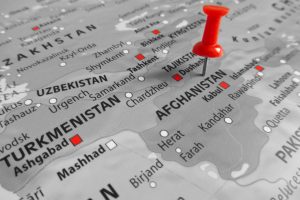As we approach three years since the Taliban’s takeover of Afghanistan, many aspects of governance have changed, most prominently the precipitous decline of girls’ education and space for women in public life. The justice system has also experienced a transformation, as the former government’s Western-inspired system of prosecutors and judges was swept aside in favor of swift judgments by Taliban justices interpreting Shariah principles. Although short on due process and unsparing in their punishments, the Taliban’s courts have won some praise from citizens for their speed, clearing huge backlogs of cases, and are regarded as relatively less corrupt than the previous regime.
The perceived effectiveness of Taliban local courts stands in sharp contrast with many aspects of their governance post-coup: economic policy has failed to jumpstart a flagging economy, terrorism from the Islamic State Khorasan Province is seen as a mismanaged and growing security threat, and many basics of government functioning remain vague at best.
The Taliban’s comfort with local level dispute resolution is in many ways a return to earlier, simpler days for the movement. In the heart of the insurgency, more than a decade ago, they could focus on the relatively straightforward task of fighting the former Kabul government and its allies, and imposing Shariah law in rural areas using a network of motorbike-riding judges.
Our new research looks back at this period (from 2011-2014) at the end of the U.S. “surge” to understand how the Taliban’s introduction of local courts may have impacted the course of the war.
Comparing districts where Taliban courts operated during this period with other districts that otherwise look very similar but did not have courts, the areas with Taliban justice experienced significant reductions in violent civil disputes (for example, fights between families over land). This resulted in a major increase in citizens’ reported perceptions of Taliban capacity to govern, and reduced confidence in the Kabul government, as reported by citizens on a U.S.-government collected survey (perhaps thus an understatement). Afghans who witnessed Taliban justice in their district were much more likely to report that they would bring their own disputes to the Taliban, rather than to government courts, and reported lower likelihood of calling in tips to U.S. forces about Taliban IEDs.
This demonstration of capacity and shift in public opinion appears to have provided the Taliban with a boost on the battlefield as well. In areas where courts were operating, the Taliban were able to execute nearly 70 percent more attacks against U.S. and government forces, including IEDs. Rather than violence being a means of taking control to impose Islamic jurisprudence, the Taliban used courts to win favor with the public, which allowed for a more effective insurgent war.
Why would Afghans, who are very familiar with Taliban brutality, be impressed with their justice system? For one, most people were not themselves parties to active disputes, instead suffering collateral damage from disputes ongoing in their village or town. Even if they did not agree with the Taliban’s decision of who should win in a given case, they were grateful that the matter was finally resolved. Importantly, this gave citizens a stake in the Taliban remaining influential or indeed taking full control – if the former Afghan government were to retake control, all these land disputes would become unresolved again as the losers sought reconsideration within the government courts.
Second, citizens felt that the Taliban’s system was more legitimately in line with local values, underpinned by Islamic law, rather than a foreign-imposed legal regime that sometimes contradicted their religious values. As put by one disputant: “Unfortunately, I lost the trial. I am not upset at the Taliban judges, they judge according to the Shariah, and I cannot oppose the Shariah.”
At the time of the U.S. withdrawal, the reported intelligence consensus was that the Kabul government would fall within 6-12 months. In practice, the Taliban almost immediately took over control after U.S. troops were no longer in place to prop up the regime. Canny observers of Afghanistan and past rebellions noted that even a perfectly executed campaign likely would not have prevented this: Like the Vietnam war, this was a battle of attrition and resolve, and the Taliban, not foreign occupiers, would always be willing to keep fighting longer.
But even if outside forces are destined to eventually lose interest, why did the Taliban not face a stanch rebellion of disaffected Afghans opposed to their rule and in favor of the political changes of the past two decades? During the Taliban’s first stint in power in the 1990s, they faced persistent insurrections from regional and ethnic armies who refused to submit to their rule. Today, in contrast, the only consistent armed opposition the Taliban faces is from the Islamic State, who are even more extreme ideologically.
The Taliban’s relatively successful program of justice provision may have played a role in making the public ambivalent to their eventual conquest of Kabul. In survey experiments conducted in late 2020, as the U.S. withdrawal strategy became clear, more than 60 percent of Afghans supported peace and were indifferent to the Taliban being in control. Islamic law was more popular than secular law, as was an “Islamic Emirate” as compared to the existing “Islamic Republic.”
Taken together, we can understand the population of Afghanistan as having taken a gamble on peace with the Taliban, one that was informed in part by the experience of Taliban informal governance through rebel courts. After decades of violence, and with just enough evidence that governance would not completely disappear, people were willing to accept a difficult peace as far superior to ongoing war.

































